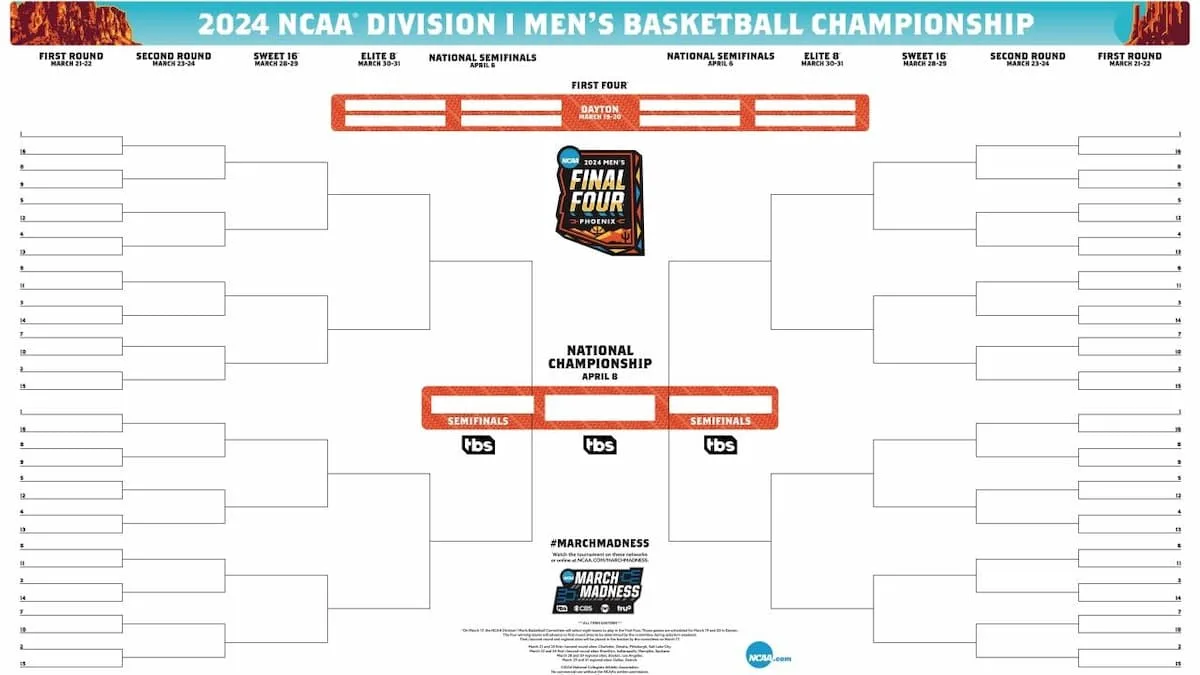Table of Contents
In the exhilarating realm of college basketball, where March Madness reigns supreme, mastering bracketology isn’t just about luck—it’s about employing advanced strategies that give you the edge over the competition. Whether you’re a seasoned bracketologist or a newcomer to the game, understanding the nuances of bracketology and implementing effective tactics can significantly enhance your chances of success. In this comprehensive guide, we’ll delve into the intricacies of bracketology and explore advanced strategies for Mastering Bracketology to help you dominate your bracket pool.
Advanced Strategies for Mastering Bracketology: Understanding the Fundamentals
Before diving into advanced strategies, it’s crucial to grasp the fundamentals of bracketology. At its core, bracketology is the practice of predicting the outcomes of the NCAA Men’s Basketball Tournament, commonly referred to as March Madness. Participants fill out brackets, selecting the winners of each game until a national champion is crowned. While luck plays a role, skilled bracketologists rely on data analysis, historical trends, and in-depth knowledge of teams and players to make informed predictions.

Conducting Thorough Research
One of the most critical components of successful bracketology is conducting thorough research. This involves analyzing team statistics, player performance, coaching strategies, and recent trends. By immersing yourself in the latest news and developments surrounding college basketball, you’ll gain valuable insights that can inform your bracket selections.
Utilizing Advanced Statistical Models
In addition to traditional research methods, bracketologists can leverage advanced statistical models to refine their predictions further. These models incorporate a multitude of factors, such as offensive and defensive efficiency, strength of schedule, and historical performance in tournament play. By harnessing the power of data analytics, bracketologists can identify patterns and trends that may not be apparent through traditional analysis alone.
Embracing the Element of Surprise

In a tournament known for its unpredictability, embracing the element of surprise can be a winning strategy. While top-seeded teams may seem like safe picks, upsets are a common occurrence in March Madness. Identifying underdog teams with the potential to pull off upsets can give you a competitive edge in your bracket pool.
Analyzing Matchup Dynamics
When evaluating potential upsets, it’s essential to consider matchup dynamics. Certain teams may possess strengths that exploit their opponent’s weaknesses, making them formidable challengers despite their lower seed. By carefully analyzing individual matchups and playing styles, you can identify opportunities for upsets that may go overlooked by casual fans.
Leveraging Historical Trends
Another key aspect of advanced bracketology is leveraging historical trends to inform your predictions. Over the years, certain patterns have emerged in tournament play, offering valuable insights into team performance and seeding outcomes. By studying these trends, bracketologists can make more informed decisions when filling out their brackets.
Identifying Cinderella Stories
One of the most enduring phenomena in March Madness is the “Cinderella story”—the unexpected success of low-seeded teams against higher-ranked opponents. By identifying teams with the potential to become this year’s Cinderella, bracketologists can capitalize on underdog victories that defy conventional wisdom.
Recognizing Momentum Shifts
In addition to Cinderella stories, bracketologists must be attuned to momentum shifts within the tournament. Teams that enter the tournament on a hot streak or have overcome adversity during the regular season may possess the confidence and resilience needed to make a deep run. By recognizing these momentum shifts early on, bracketologists can adjust their predictions accordingly.
Applying Contextual Analysis
While historical trends provide valuable insights, bracketologists must also apply contextual analysis to account for unique circumstances in each tournament. Factors such as injuries, coaching changes, and conference strength can significantly impact team performance and seeding outcomes. By taking these variables into consideration, bracketologists can adapt their strategies to reflect the current landscape of college basketball.
Implementing Strategic Bracket Construction
Once you’ve conducted thorough research and analyzed historical trends, it’s time to implement strategic bracket construction techniques. Building a winning bracket requires careful consideration of seeding, matchups, and potential upsets, as well as strategic thinking to maximize your chances of success.
Seeding Optimization
When filling out your bracket, pay close attention to seeding and avoid relying solely on chalk picks (selecting higher-seeded teams to advance). While top seeds are typically favored to win, upsets can occur at any time, especially in the early rounds of the tournament. By strategically selecting lower-seeded teams with favorable matchups, you can differentiate your bracket and gain an advantage over competitors.
Embracing Risk vs. Reward
Incorporating an element of risk vs. reward is essential when constructing your bracket. While conservative picks may minimize the likelihood of busting your bracket, they also limit your potential for scoring points in a competitive pool. Conversely, bold selections may carry higher risks but can yield significant rewards if they pay off. Finding the right balance between risk and reward is key to maximizing your bracket’s potential.
Building Multiple Brackets

For experienced bracketologists, building multiple brackets can be a savvy strategy for hedging your bets and increasing your chances of success. By creating variations of your main bracket with different scenarios and outcomes, you can cover a broader range of possibilities and mitigate the impact of unforeseen upsets. However, it’s essential to maintain consistency in your selections and avoid spreading yourself too thin across multiple brackets.
Conclusion
Mastering bracketology requires a combination of research, analysis, and strategic thinking. By understanding the fundamentals, leveraging historical trends, and implementing strategic bracket construction techniques, you can maximize your chances of success and outperform the competition. Whether you’re a casual fan or a seasoned bracketologist, embracing advanced strategies will elevate your March Madness experience and bring you one step closer to bracket perfection.
Please click here for Further Exploration
Please click here to read about THE SPECTACULAR GRIDIRON: UNDERSTANDING THE ANATOMY OF AN AMERICAN FOOTBALL FIELD


1 thought on “Advanced Strategies for Mastering Bracketology”